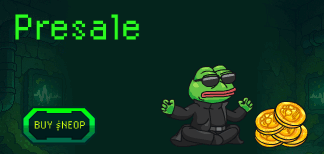Ethereum, the second largest blockchain in the world, is facing an increasingly important challenge as data reveals an increase in censorship, mainly driven by major block builders excluding transactions sanctioned by the United States government.
For blockchain technology enthusiasts, the appeal lies in its decentralized and open nature, free from the constraints that characterize the current Internet landscape.
Summary
The problem of increasing censorship in the Ethereum blockchain
The crucial moment occurred when the United States government sanctioned Tornado Cash, a privacy mixing program on Ethereum, citing its use by entities sanctioned by the Office of Foreign Assets Control (OFAC) of the US Department of the Treasury.
Despite the initial challenge from blockchain supporters, Ethereum’s resistance to censorship has been called into question.
Research indicates a significant increase in censorship, with about 72% of data blocks being sent to MEV-Boost, a middleware that powers Ethereum validators, now considered “censored”.
According to Toni Wahrstätter, a researcher at the Ethereum Foundation, this figure is significantly higher compared to the approximately 25% in November 2022.
Wahrstätter emphasizes the authority of block builders in deciding the content of the blockchain, selectively excluding sanctioned cryptographic addresses.
Among the top five block builders, only “Titan Builder” explicitly declares to refrain from filtering transactions, highlighting a vulnerability in Ethereum’s decentralization.
The increase in censorship raises concerns as block builders exercise the power to decide which transactions enter their blocks, potentially compromising the essence of decentralization.
Martin Köppelmann, founder of the Ethereum scaling network Gnosis Chain, notes the proximity of heavy censorship if another builder adopts filtering practices.
Although transactions that violate sanctions can still enter Ethereum, Wahrstätter considers the associated costs and delays as a form of censorship. Infrastructure operators may see this as a necessary step towards compliance, in line with Ethereum’s journey towards mainstream adoption.
The evolution of Ethereum
The research sheds light on the evolution of Ethereum’s transaction apparatus, in which a few dominant actors, including trading bots and block builders, exert influence over network operations.
The transition of Ethereum towards a complex infrastructure raises doubts about its departure from the original vision of a decentralized and censorship-resistant platform.
The results of Wahrstätter underline the centralization of the Ethereum MEV (Maximum Extractable Value) economy, which poses security risks and threatens network neutrality.
The concentration of key elements, such as block builders and relayers, raises concerns about the long-term sustainability and integrity of the Ethereum infrastructure.
Given the recent events, it is not surprising that some infrastructure providers, especially those based in the United States, exercise caution in light of OFAC regulations. The legal repercussions faced by Binance and Tornado Cash developers contribute to the complex interaction between regulatory compliance and censorship concerns.
In light of these challenges, Ethereum builders are actively addressing issues of centralization and censorship.
Vitalik Buterin, the co-founder of Ethereum, has included in the latest version of the proposed roadmap software updates that limit censorship, signaling a commitment to preserving the original principles of Ethereum in the context of evolving dynamics.
Conclusions
The issue of Ethereum censorship reflects the delicate balance between compliance with regulations and the fundamental principles of blockchain technology.
As the network faces these challenges, stakeholders must collaboratively explore solutions to ensure the ongoing resilience of Ethereum and adherence to its decentralized ethos.


